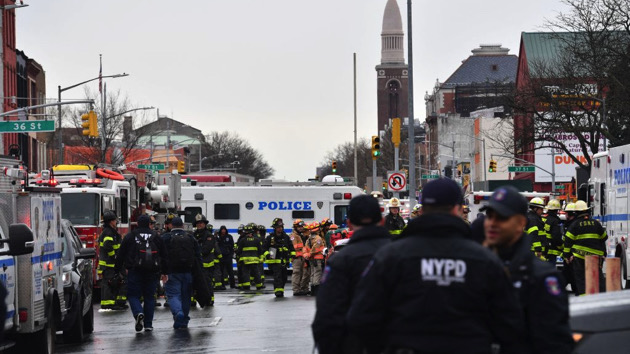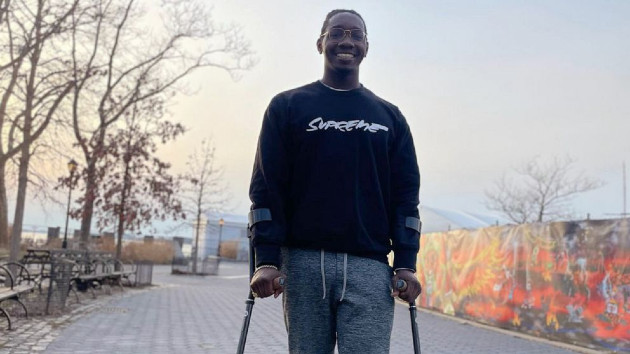
(NEW YORK) — A gunman donned a gas mask, detonated a smoke canister and opened fire on a New York City subway train Tuesday morning, shooting 10 people and sparking panic during the rush-hour commute.
Twenty-nine victims went to Brooklyn hospitals with various injuries. Five people are in critical but stable condition.
Police described the gunman, who is still on the run, as an “active shooter.” The bloodshed comes amid a surge in crime on New York City’s transit system.
The shooting, reported just before 8:30 a.m. local time, erupted on a Manhattan-bound N subway car as it approached the 36th Street subway station in Sunset Park in Brooklyn, New York City Police Commissioner Keechant Sewell said at a news conference.
According to a police official, the suspect was seen mumbling to himself before he put on the gas mask, released a smoke canister commonly bought online and opened fire with a .380 caliber handgun.
There were no working cameras in the 36th Street station, according to a police official. But police were able to get an image of the suspect from a bystander’s cellphone video, a law enforcement official told ABC News.
In the subway station, police found a handgun with three extended round magazines: one on the shooter’s backpack, one empty on the floor and one in the gun jammed, the law enforcement official said. The gun jamming is believed to have saved lives, the official said.
Yav Montano, 24, was on the train when he said the whole car filled with smoke.
“It was hard to breathe, it was hard to see. It was hard to hear or pay attention to what was going on with the chaos that was happening,” he said.
“I didn’t see anything because the smoke in the train was so thick. I couldn’t even see halfway down the length of the train car,” he added.
“After the smoke went on there was a bunch of popping, which I thought at first was firecrackers,” he went on. “I ducked behind a chair to protect myself.”
From a crouching position on the floor, Montano said, “I saw a lot of blood on the floor. Too much blood.”
Montano said the doors opened at 36th Street about three to four minutes later. “As soon as the doors opened, everyone started to pour out and run,” he recalled.
Multiple smoke devices and a bag of commercial-grade fireworks have been recovered, according to a law enforcement official.
Sewell said there are no known explosives on subways and a motive in still unknown.
After initially saying the shooting was not being investigated as an act of terrorism, Sewell later said police are “not ruling anything out.”
Sewell described the suspect as a man wearing a green construction-type vest and a gray-hooded sweatshirt. The suspect has a “heavy build” and is believed to be about 5 feet 5 inches tall, Sewell said.
The NYPD has put out a citywide alert for a U-Haul vehicle with license plate AL31408 that may be associated with the suspect, according to police sources.
A man who works in a bodega outside the subway told ABC New York station WABC about 10 to 15 people ran to his store for safety.
“It was horrifying,” he said.
“I saw three or four people with gunshot wounds to their legs. They just fell to floor before the cops came. … They just stayed here for a couple of minutes before the coast was clear,” he said. “Everyone was terrified, I was terrified.”
Victims range in age from 17 to 50, according to a police official.
New York City Mayor Eric Adams told NY1, “We are going to remain vigilant and catch the person responsible.”
A senior federal law enforcement source told ABC News authorities are concerned this shooting showed a level of planning and commitment to kill scores of commuters during rush hour. The source said it is too early to know if the suspect acted alone.
President Joe Biden, Vice President Kamala Harris, Attorney General Merrick Garland and Department of Homeland Security Secretary Alejandro Mayorkas have been briefed on the situation.
Anyone with information, video or photos is urged to call 800-577-TIPS.
This is a developing story. Please check back for updates.
ABC News’ Pierre Thomas, Mark Crudele, Ivan Pereira, Miles Cohen and Luke Barr contributed to this report.
Copyright © 2022, ABC Audio. All rights reserved.







